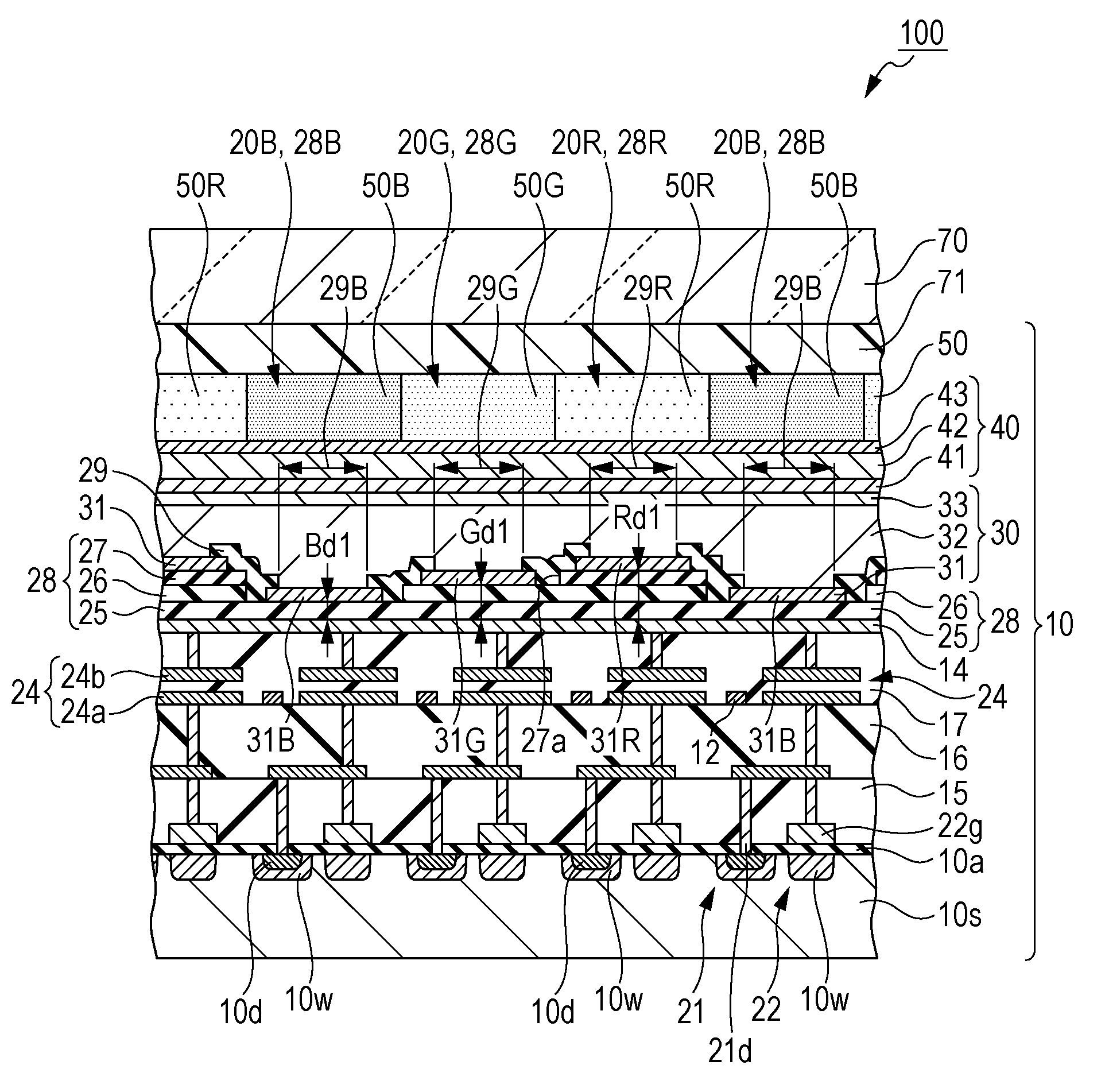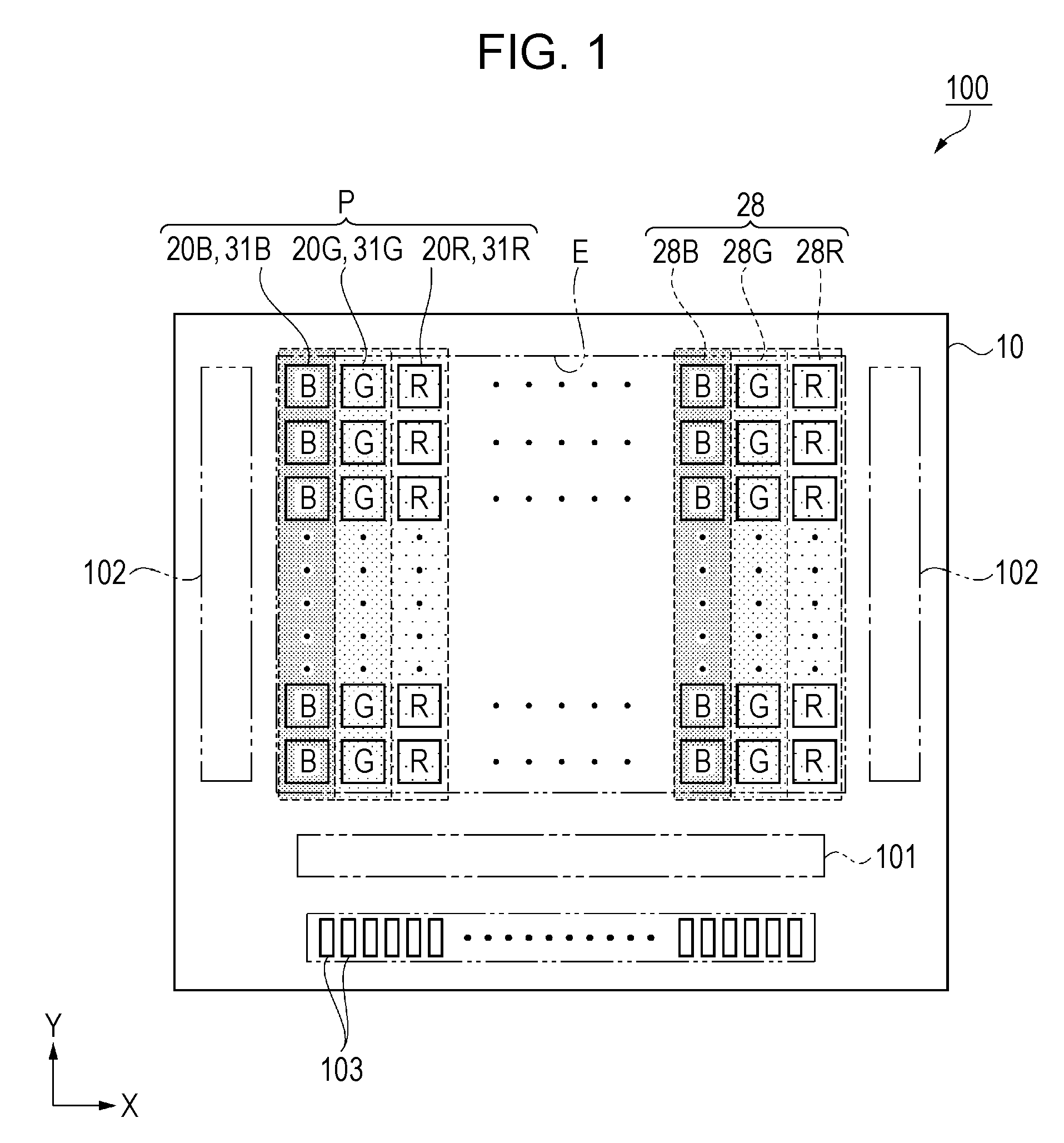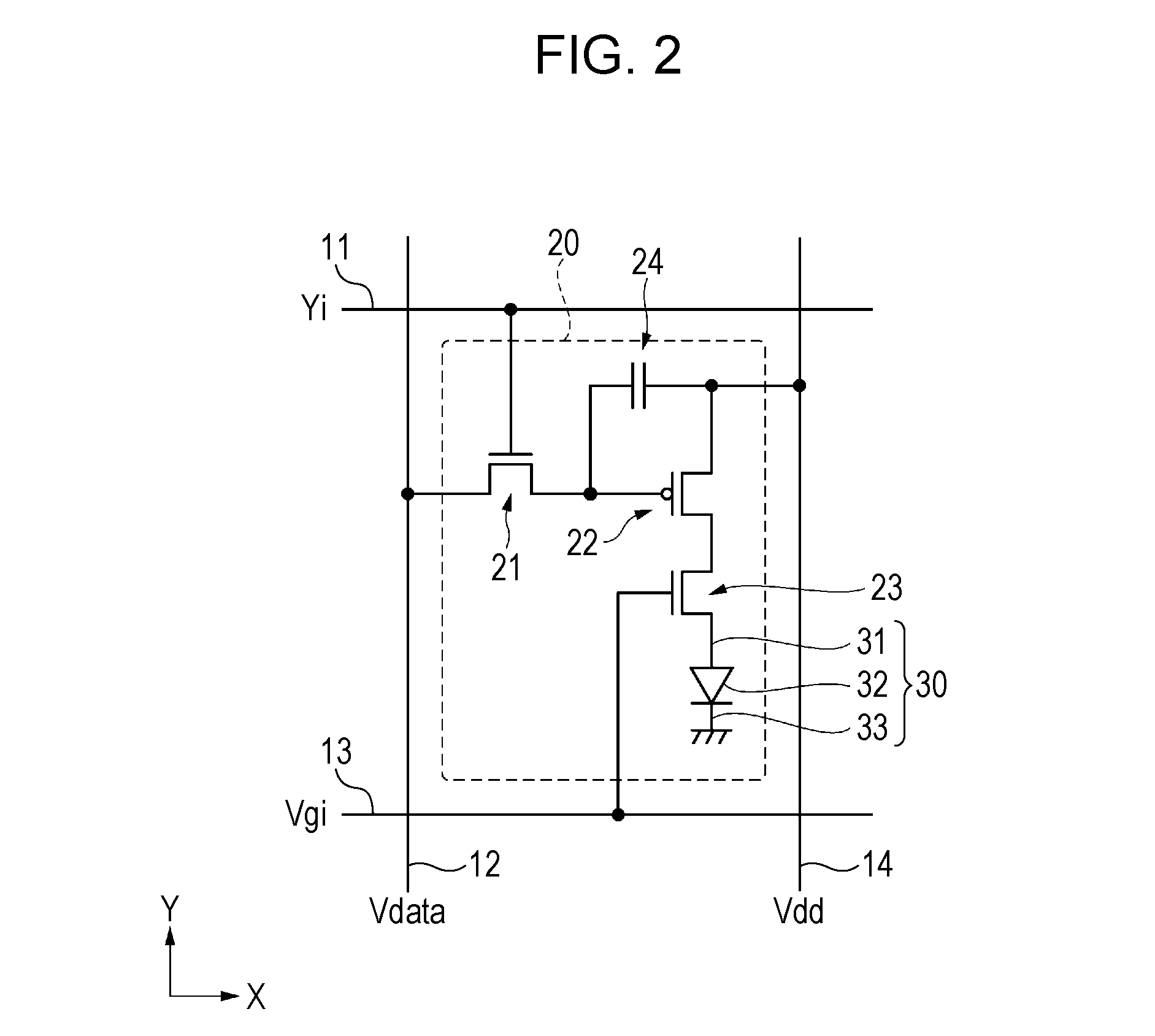Light emitting device, method of manufacturing light emitting device, and electronic equipment
a technology of light emitting devices and light emitting devices, which is applied in the direction of semiconductor devices, organic semiconductor devices, electrical equipment, etc., can solve the problems of color purity of light, emitted from light emitting areas, and difficult to enlarge the light emitting area over the boundary, so as to improve the color purity of blue, improve the effect of color purity and increase the light emitting area
- Summary
- Abstract
- Description
- Claims
- Application Information
AI Technical Summary
Benefits of technology
Problems solved by technology
Method used
Image
Examples
first embodiment
Outline of Organic EL Apparatus
[0061]An organic EL apparatus 100 according to the first embodiment is an example of a light emitting device, and includes an optical resonance structure in which it is possible to enhance the color purity of display light.
[0062]First, the outline of the organic EL apparatus 100 according to the embodiment will be described with reference to FIGS. 1 to 3. FIG. 1 is a schematic plane view illustrating the configuration of the organic EL apparatus, FIG. 2 is an equivalent circuit diagram illustrating the electrical configuration of the organic EL apparatus, and FIG. 3 is a schematic plane view illustrating a characteristic portion of the light emitting pixels.
[0063]Meanwhile, FIG. 3 illustrates components which are necessary to describe the characteristic portion of the light emitting pixels and does not illustrate the other components. In addition, in FIG. 3, two-dot dashed lines show the outlines of the light emitting pixels 20.
[0064]As shown in FIG. 1...
second embodiment
Outline of Organic EL Apparatus
[0202]FIG. 12 is a schematic cross-sectional diagram illustrating the configuration of an organic EL apparatus according to a second embodiment with regard to FIG. 4, that is, a schematic cross-sectional diagram illustrating an area, in which the openings are provided, in the second insulation layer which defines a light emission area. FIG. 13 is another schematic cross-sectional diagram illustrating the configuration of the organic EL apparatus according to the second embodiment with regard to FIG. 5, that is, a schematic cross-sectional diagram illustrating an area in which the pixel electrode is electrically connected to the third transistor.
[0203]Hereinafter, the outline of the organic EL apparatus 200 according to the embodiment will be described with reference to FIGS. 12 and 13 centering on the difference from the first embodiment. Meanwhile, the same reference numerals are attached to the same components as in the first embodiment, and the desc...
third embodiment
[0229]FIG. 17 is a schematic diagram illustrating a head mounted display as an example of electronic equipment.
[0230]As shown in FIG. 17, a head mounted display 1000 includes two display units 1001 which are provided to correspond to the right and left eyes. When an observer M mounts the head mounted display 1000 on the head like glasses, the observer M can see letters, images, and the like which are displayed on the display units 1001. For example, if images are displayed in consideration of the parallax between the right and left display units 1001, it is possible to see and enjoy stereoscopic images.
[0231]In the display units 1001, the organic EL apparatus 100 according to the first embodiment or the organic EL apparatus 200 according to the second embodiment is mounted. Since the organic EL apparatus 100 and the organic EL apparatus 200 include the optical resonance structure, the color purity of light which is emitted from the light emitting pixels 20B, 20G,...
PUM
 Login to View More
Login to View More Abstract
Description
Claims
Application Information
 Login to View More
Login to View More - R&D
- Intellectual Property
- Life Sciences
- Materials
- Tech Scout
- Unparalleled Data Quality
- Higher Quality Content
- 60% Fewer Hallucinations
Browse by: Latest US Patents, China's latest patents, Technical Efficacy Thesaurus, Application Domain, Technology Topic, Popular Technical Reports.
© 2025 PatSnap. All rights reserved.Legal|Privacy policy|Modern Slavery Act Transparency Statement|Sitemap|About US| Contact US: help@patsnap.com



